Indie Autism Reading List
To go with our special IndieVoices Podcast on Autism, here are some recent indie books we recommend.
The Official Chase ’N Yur Face Cookbook: Tasty Recipes & Fun Facts To Start Your Food Adventure

Chase Bailey
Chase ’N Yur Face Media
Softcover $24.95 (192pp)
978-0-692-75585-3
Inspired by his journey with autism & overcoming food aversions, Chase Bailey’s The Official Chase ‘N Yur Face Cookbook, entices people of all ages to experience familiar dishes done in different ways; & to discover new things about food. Combining delightful recipes, uplifting anecdotes, fun facts, delectable photographs,& humorous illustrations, Chase teaches home-cooks to prepare a wonderful array of dishes.Chase’s cookbook includes omnivore, vegetarian, vegan, & gluten-free recipes.
On the Spectrum
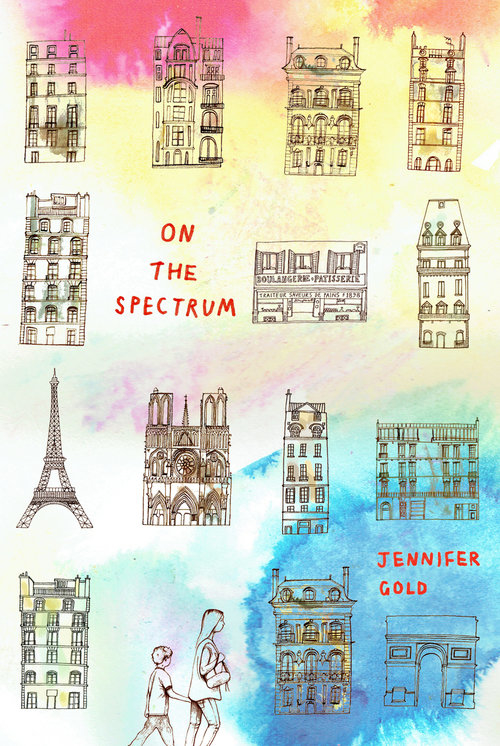
Jennifer Gold
Second Story Press
Softcover $13.95 (336pp)
978-1-7726-0042-1
The unexpected responsibility of caring for her autistic brother during her summer in Paris turns out to be just the adventure that Clara needed.
Growing up in the shadow of a famous mother, Clara has never felt good about her body. Now, at sixteen, she has an unhealthy obsession with healthy eating. After a social media disaster, she decides to escape for the summer to Paris to stay with her estranged dad and her six-year-old brother, Alastair, who is on the autism spectrum. Charged with his care, Clara and Alastair set out to explore the city. Paris, and a handsome young French baker, teaches Clara about first love, and a new love of food. And Alastair teachers Clara about patience, trust, and the beauty of loving without judgment.
Ketchup is My Favorite Vegetable: A Family Grows Up with Autism
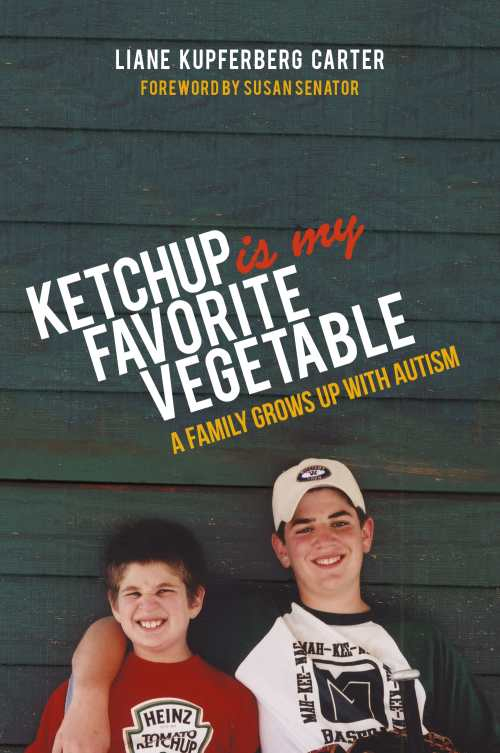
Liane Kupferberg Carter
Jessica Kingsley Publishers
Softcover $18.95 (352pp)
978-1-84905-715-8
“There are books written about families, and there are books written about autism, and in ‘Ketchup is My Favorite Vegetable,’ author Liane Kupferberg Carter seamlessly weaves the two together to create a beautiful and heart-tugging story that will stay with you for a long time. In its purest sense, this is a love story–about two parents and the love they share for each other and for their sons, one of whom has autism.” ~ Better After 50 Magazine
Shtum

Jem Lester
The Overlook Press
Hardcover $26.95 (320pp)
978-1-4683-1472-4
Buy: Amazon
Shtum is a Yiddish word meaning noncommunicative or silent, and that’s where Ben Jewell finds himself in British author Jem Lester’s novel of the same name. Ben’s world is comprised of his autistic son, a troubled marriage, an estranged relationship with his Holocaust-survivor father, a failing business, and his own entombed emotions. So often, the solution to life’s problems is to talk about it, but what can Ben do when there seems to be no hope of breaking through the silence?
Ben’s mornings start with his wife stationed in the kitchen while he cleans up his son, Jonah, “his reeking pajamas. The aromatic nappy and soiled wipes tied in a plastic bag … she deals with what goes in and I deal with what comes out.” And the day doesn’t usually get better from there. That’s because his ten-year-old son has complex Autism Spectrum Disorder, and with all his resources tapped, Ben’s way forward seems less about making choices than scraping together what’s left and facing the onslaught.
After a decade of caring for their son, Ben and his wife are realizing that life with Jonah will not get better. With his marriage on the rocks and his head in a bottle, Ben finds himself back in his father’s home, trying to heal himself and care for his son. As things fall apart, Ben’s world narrows to advocating for Jonah and learning to parse the nature of silence.
Lester renders a moving portrait of one parent’s struggle to navigate the world on behalf of his child. As Ben shoulders the burdens his family carries, Lester shows how draining it can be to do the difficult work of accepting and loving each other. Ultimately, Ben discovers that, while some silences need to be broken, others must be accepted if he’s to understand himself and those he loves.
LETITIA MONTGOMERY-RODGERS (May 9, 2017)
Temple Grandin’s Guide to Working With Farm Animals: Humane Livestock Handling Practices for the Small Farm
Temple Grandin
Storey Publishing
Softcover $19.95 (192pp)
978-1-6121-2744-6
Award-winning author Temple Grandin is famous for her groundbreaking approach to decoding animal behavior. Now she extends her expert guidance to small-scale farming operations. Grandin’s fascinating explanations of how herd animals think — describing their senses, fears, instincts, and memories — and how to analyze their behavior, will help you handle your livestock more safely and effectively. You’ll learn to become a skilled observer of animal movement and behavior, and detailed illustrations will help you set up simple and efficient facilities for managing a small herd of 3 to 25 cattle or pigs, or 5 to 100 goats or sheep.
The Question of the Absentee Father
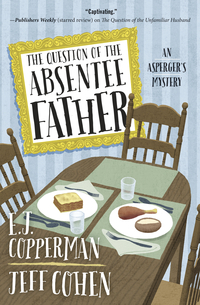
E. J. Copperman & Jeff Cohen
Midnight Ink
Softcover $14.99 (288pp)
978-0-7387-5079-8
“Where is your father living now?” This is not a question Samuel Hoening wants to answer, but it’s the one his mother has asked him. Samuel’s father left when he was four years old and Samuel has no desire to reconnect with him. Ms. Washburn, his friend and colleague at Questions Answered, agrees to take the trip to Los Angeles with him. When they arrive in California, answering the question of the absentee father becomes more complicated, and much more dangerous, than it first appeared.
“The reader has the satisfaction of getting a mystery, a romp, and a respectful treatment of a neurotypical protagonist.”—Publishers Weekly
Ten Things Every Child with Autism Wishes You Knew
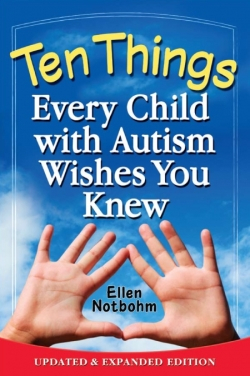
Ellen Notbohm
Future Horizons
Softcover $19.95 (175pp)
978-1-935274-65-0
Brimming with insight, compassion and humor, this timeless book describes ten characteristics that help illuminate – not define – children with autism. Updated edition delves into deeper thought on communication, social thinking and the role adult perspectives play in guiding the child with autism to a meaningful, productive, self-sufficient life. Includes 70-question study guide suitable for group discussion or self-relflection.
Autism Every Day: Over 150 Strategies Lived and Learned by a Professional Autism Consultant with 3 Sons on the Spectrum
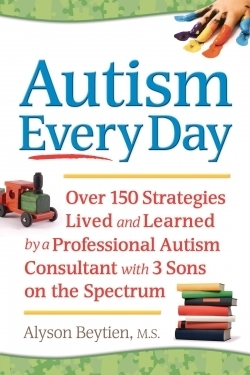
Alyson Beytien, MS
Future Horizons
Softcover $14.95 (286pp)
978-1-935274-50-6
Alysons experiences and strategies serve as a guide for the entire autism community!
Girls Growing Up on the Autism Spectrum
What Parents and Professionals Should Know About the Pre-Teen and Teenage Years
Gina Marie Moravcik
Samara Pulver Tetenbaum
Shana Nichols
Jessica Kingsley
Unknown $19.95 (256pp)
978-1-84310-855-9
Buy: Local Bookstore (Bookshop), Amazon
It has been tough to identify girls with Autism Spectrum Disorder (ASD) because their symptoms are so different from boys’, but for the millions of pre-teen and teen girls who feel “different,” under-standing how to deal with autism and Asperger’s can be a lonely, unexplored effort.
In Girls Growing Up on the Autism Spectrum: What Parents and Professionals Should Know About the Pre-Teen and Teenage Years, Shana Nichols, Gina Marie Moravcik, and Samara Pulver Tetenbaum provide solid, specific advice on teen issues—social life, changing bodies, friendships, diet and nutrition, self-reliance, anxiety, and more. This is an excellent beginning, with re-sources listed (books, articles, Web sites, blogs) in every chapter and short case studies that break up the text throughout. The authors tackle the bigger issues of socialization and friendships, plus the nitty-gritty of raising an adolescent girl—periods, ob-gyn exams, weight, privacy, and hygiene.
Girls Growing Up is long and detailed but very easy to reference. “Tips for Talking” in each chapter help parents remember the main points of each section. As autism covers a wide spectrum, this book offers a wide variety of answers to a very complex diagnosis.
My Child has Autism, Now What?
10 Steps to Get You Started
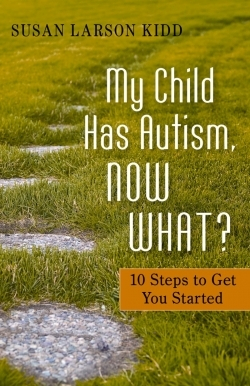
Susan Larson Kidd
Jessica Kingsley Publishers
Softcover $15.95 (128pp)
978-1-84905-841-4
Buy: Local Bookstore (Bookshop), Amazon
A diagnosis of autism can rock a parent’s foundation. And what do parents do once they get home from the doctor’s office? Often they turn to the internet for answers. But, as educational and behavioral consultant Susan Larson Kidd points out, there’s a lot of information out there that’s either wrong or unnecessary. Parents in the first stages of confusion and uncertainty may feel even more overwhelmed by the staggering number of hits they get with a search engine.
Kidd’s book, My Child Has Autism, Now What? is a terrific first step on the pathway to education and adaptation. A diagnosis of autism spectrum disorder is not the end of the world, but the beginning; Kidd’s clear, matter-of-fact explanations of terms and ideas on how to teach and communicate with autistic children can make those first few weeks and months a positive learning experience instead of time wasted on confusion and guilt.
To start with, Kidd, who specializes in autism spectrum disorder and attention deficit hyperactivity disorder, addresses some of the basic training issues that may have been causing extreme frustration in the family. Kidd shows parents how to illustrate the sequence of events surrounding everyday tasks–eating, using the toilet, going to bed–with pictures and photographs. Routines that children with autism may have trouble adapting to become clearer and easier to follow with visual reminders. She also informs parents that the senses of autistic children often work overtime, and smells, sights, and sounds that may feel normal to us may be traumatic to our children and need to be altered or removed.
Kidd describes the different kinds of therapy available, the role of the school system, how music and organization can help autistic children, and many other issues facing parents of the newly diagnosed.
Kidd writes in a welcoming, conversational manner and includes further resources at the end of each chapter. Her book is less like a manual and more like a conversation; above all her advice is friendly and easy to follow. By focusing on the practical aspects of dealing with a diagnosis of autism instead of delving into extensive theory, she keeps her book appropriate for family members and educators who are new to this arena and need concrete information to improve daily life. Her book is perfect for families on the cusp of a new world.
ANDI DIEHN (March 24, 2011)
Autism, Asperger Syndrome and Pervasive Development Disorder
An Altered Perspective
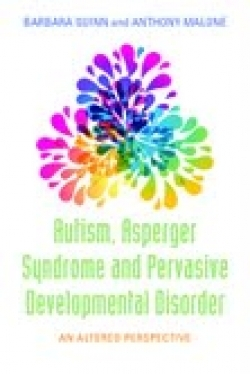
Anthony Malone
Barbara Quinn
Jessica Kingsley
Softcover $19.95 (208pp)
978-1-84905-827-8
Buy: Local Bookstore (Bookshop), Amazon
A diagnosis of autism spectrum disorder alters the life of any parent on the receiving end. An accurate label for a child’s worrying behavior means treatment and intervention; finally, parents can stop blaming themselves. But a diagnosis also means the end of the hope that a child is actually normal and will easily grow out of this difficult phase. Welcomed or dreaded, a diagnosis is always the beginning of a long journey of treatment and training.
Parents of the newly diagnosed may feel isolated and burdened; the new edition of Autism, Asperger Syndrome and Pervasive Developmental Disorder by Barbara Quinn and Anthony Malone offers answers, explanations, and—perhaps most importantly—a community of parents who’ve walked this same path.
The bulk of the book focuses on specific questions parents may have about their own child’s diagnosis. The authors begin with a discussion of normal development and the ways children might differ from this baseline, explaining, “Children with developmental disorders are not merely slow in obtaining skills. What happens in their developmental course is very different not just delayed.” Using anecdotal examples, they do an excellent job illustrating the difference between children with a diagnosis and children who are simply slower than average.
And where do parents go from there? Quinn and Malone thoroughly explain various options such as medical intervention, including drug therapies, and also educational programs that help children curb the behavior that gets in the way of learning, socializing, and communicating. Above all, readers are encouraged to remember that each child is unique and parents need to trust their instincts and educate themselves to best advocate for their children.
Much of the book is devoted to personal stories both by and about children with autism and Asperger Syndrome and their parents. Here readers will get a first-person perspective on what it’s like to see the world through the eyes of someone affected by developmental disorders.
Quinn and Malone, respectively Nurse Clinician at and Division Head for the Division of Developmental and Behavioral Pediatrics at Albany Medical College, strike the perfect tone in what could be considered a manual for parents of the newly diagnosed. They do not dismiss fear, anxiety, or sadness but explain that these are perfectly normal reactions and provide ample examples of parents who have run the gamut of emotions. Throughout the book, with precise, supportive wording, the authors encourage parents to trust themselves, listen to their children, and relish the people their sons and daughters grow to be.
ANDI DIEHN (February 15, 2011)
Autism All-Stars
How We Use Our Autism and Asperger Traits to Shine in Life
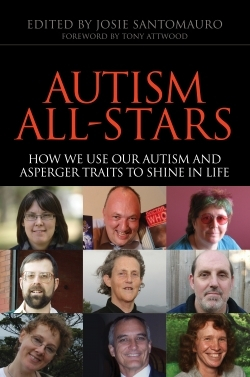
Softcover $19.95 (192pp)
978-1-84310-188-8
Buy: Local Bookstore (Bookshop), Amazon
For any newly-diagnosed autistic person, the silver lining is in your hands. Accentuating the positive aspects of the traits experienced by various individuals, Autism All-Stars emerges as one of few books for readers of all ages to examine the benefits of being neurologically “atypical.” Editor Josie Santomauro created the book she sought years ago when her son, Damian, was diagnosed—and in Damian’s own contribution, he describes the way that his childhood fascination with the behavior of others (a coping mechanism for his sense of being “abnormal”) developed into a career in psychology. In a straightforward and uncensored way, the contributors relate deeply personal experiences in detail, inviting readers to see parts of themselves in the story.
Hailing predominantly from the UK and Australia, the writers vary greatly: some were diagnosed with autism or Asperger’s syndrome early in life, while others reached retirement only to discover that this label might fit; some, like well-known author Temple Grandin, offer direct advice about workplace etiquette (“I had to learn diplomacy”); other individuals write about putting traits to work in useful, satisfying pursuits. Central to the book is the assertion that being true to oneself, by self-investigation and self-evaluation, is the key to success. “Now, if only we could persuade the rest of the world … to engage in some self-understanding,” writes music composer Dr. Colin Webber, “we just might get somewhere!”
Chapters with themes such as education, careers, relationships, creativity, and special interests allow the reader to enter the text at will, either to find evidence of successes or guidance to make the most of one’s strengths. It’s helpful to have contrasting voices within each section, as attitudes toward social expectations or the opinions of others vary widely. Some writers explain their talents as coping-mechanisms-gone-professional (and “of course, if you are a musician … people “allow” you to be a bit different and eccentric”), while others simply point out how emphasizing individual skills has helped them to carve out an enjoyable life.
The book is an excellent resource for parents, librarians, teachers, guidance counselors, and anyone else who would like to hear more from real people who have lived under the autism umbrella. Santomauro’s chapter introductions might have benefited from a co-author, as the intercutting of a non-Aspie voice with the others has a slight distancing effect. Overall, Autism All-Stars is an accessible, encouraging, and well-rounded book.
PATTY COMEAU (February 29, 2012)
Autism Causes, Prevention, and Treatment
Vitamin D Deficiency and the Explosive Rise of Autism Spectrum Disorder
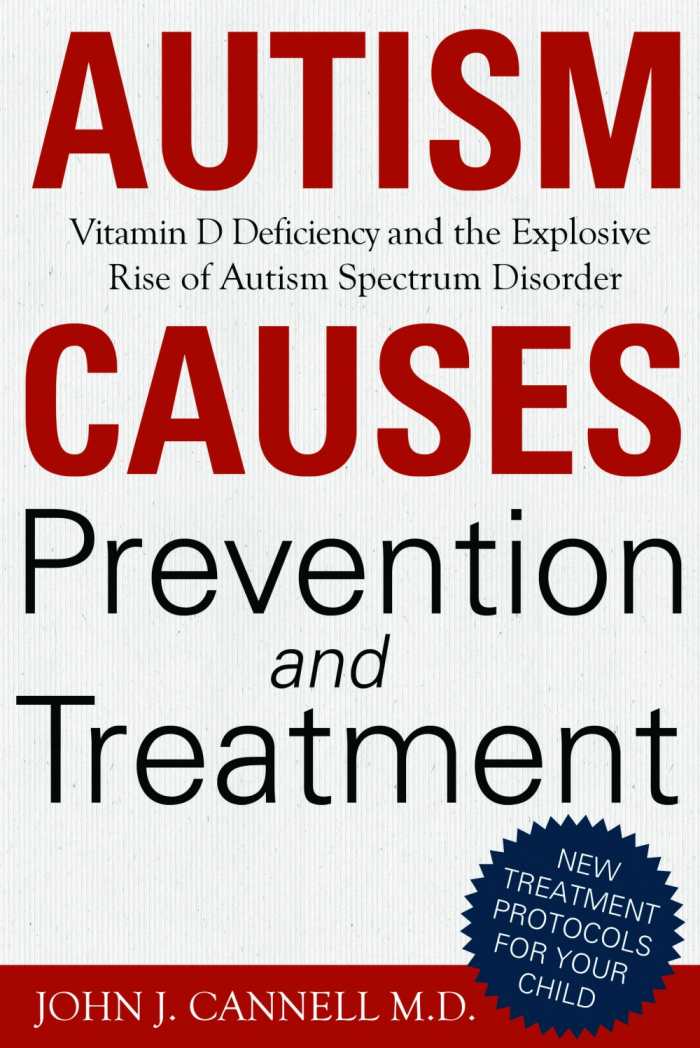
John J. Cannell
Sunrise River Press
Hardcover $19.95 (208pp)
978-1-934716-46-5
Buy: Amazon
Cannell shines the sun on a possible cause of autism: lack of vitamin D.
When John J. Cannell was just starting out as a physician in 1975, he saw something that was then rare: a patient who fit the symptoms of a range of neurodevelopment disorders known as autism. Cannell practiced medicine throughout the 1980s without ever seeing another case, and it did not pop up again until 1991, the beginning of what has since been labeled an “autism epidemic.” What happened between 1975 and 1991? While there are many theories and popular misconceptions about causes, no single answer has come to be universally accepted. In Autism Causes, Prevention, and Treatment, Cannell intriguingly, almost convincingly, has a single answer: vitamin D deficiency.
At first glance, this book may seem like Cannell is a hammer in search of a nail. He’s been obsessed with vitamin D since 1973, when he linked its deficiency to a resurgence of rickets; since then, he has published twenty-three peer-reviewed articles on vitamin D. But as Cannell’s arguments progress throughout the book, it all makes sense. What is the body’s main source of vitamin D? Sunlight. What are we getting less of these days, due to factors ranging from fear of skin cancer to staying indoors and playing video games? Sunlight. What has happened since sunlight fell out of medical favor? An autism epidemic.
Cannell’s epiphany came in 2004, when he noticed toddlers drinking juice instead of vitamin D-enriched formula or cow’s milk. After kids are weaned from formula, he writes, their main source of vitamin D goes away. Coincidentally, he writes, weaning happens at about the time toddlers get their first vaccinations, leading (and misleading) too many parents of autistic kids to blame vaccines.
Still, as all scientists point out, it’s too easy to mistake correlation with causation; in the end, the vitamin D deficiency argument is a strong one but not a smoking gun. Cannell admits that there is no incontrovertible proof. However, if vitamin D can only help and not hurt, he reasons, why take the chance on failing to supplement? Against that, there is no argument.
HOWARD LOVY (February 27, 2015)
Hannah Hohman
